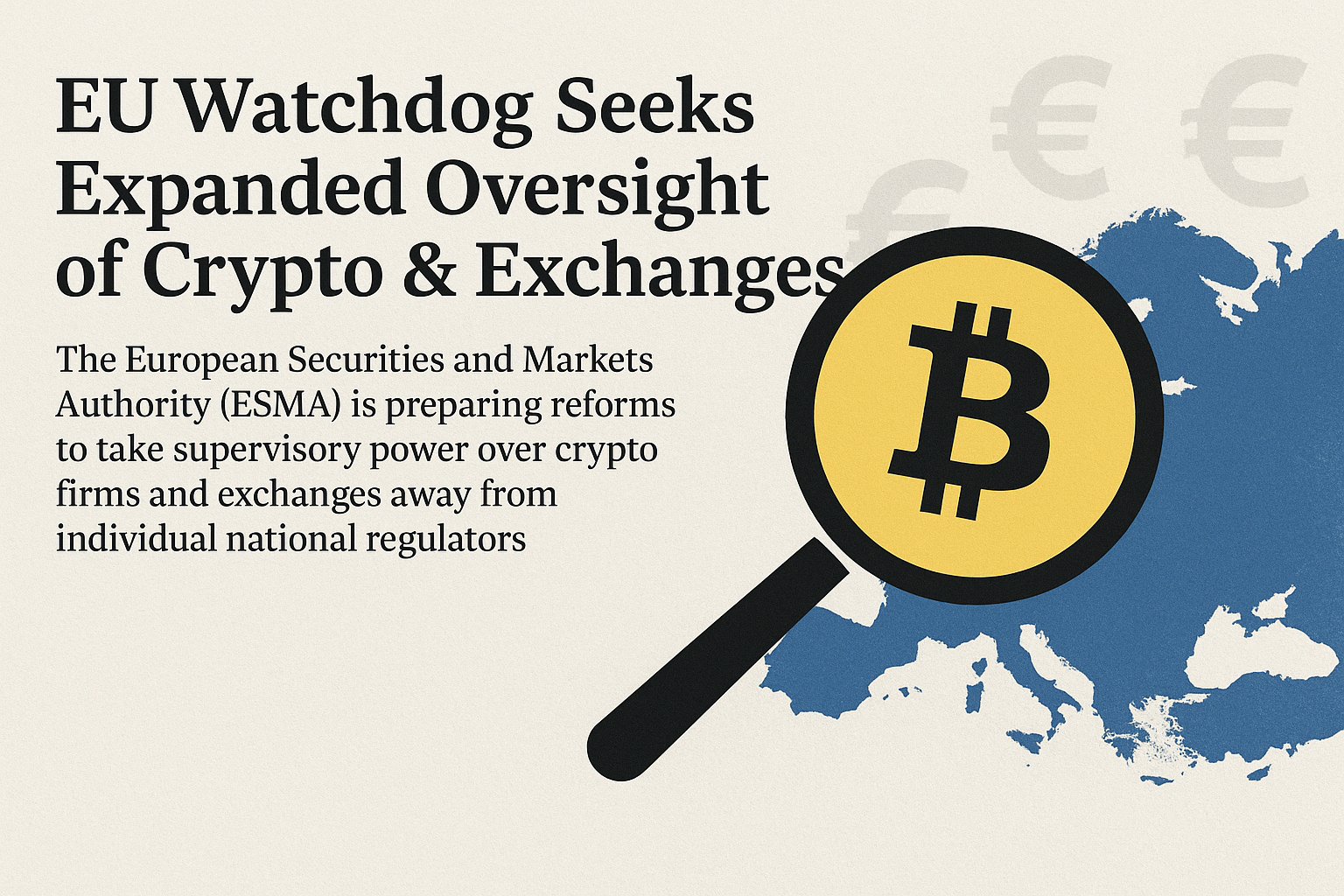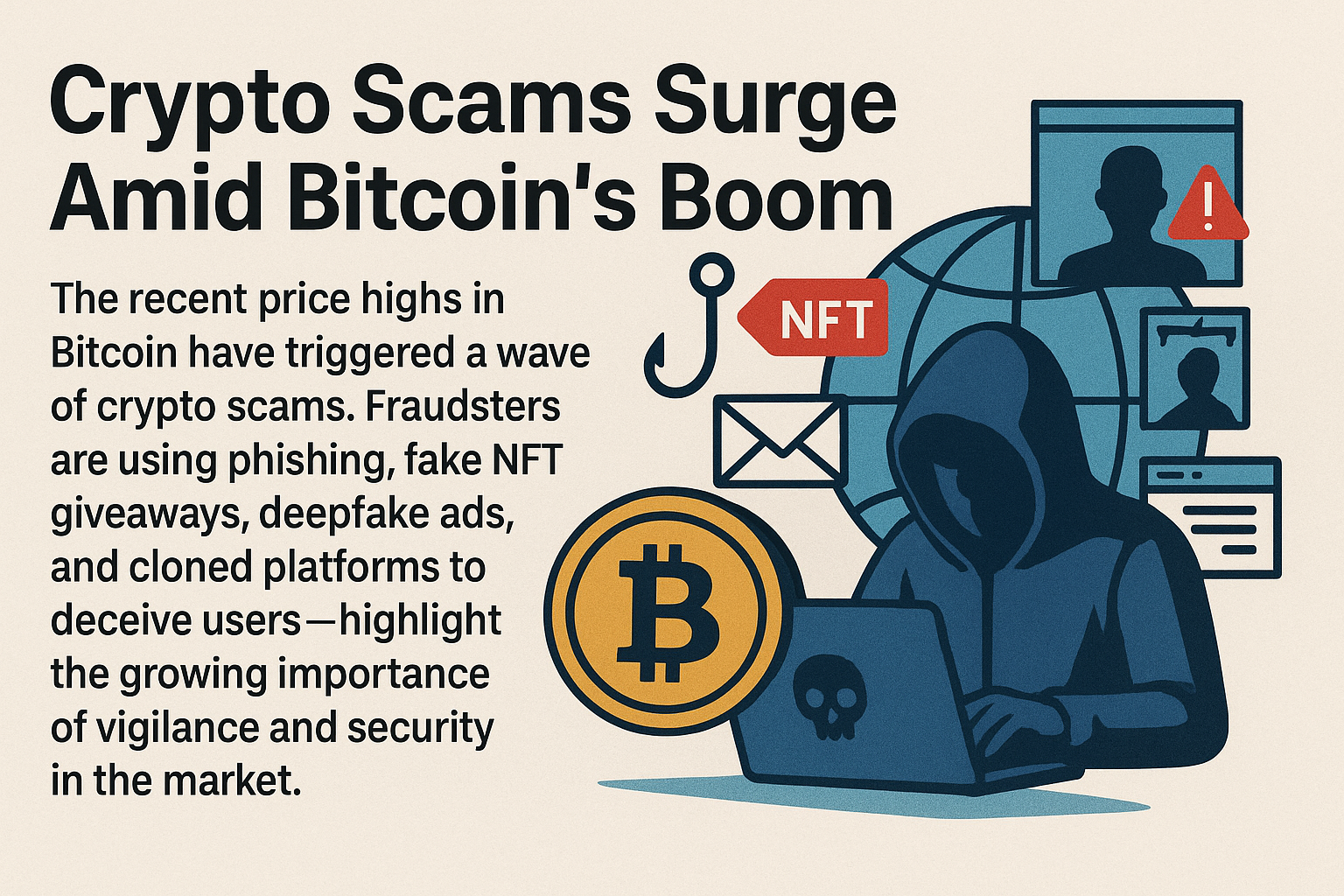The European Securities and Markets Authority (ESMA) is preparing sweeping reforms that could transform the regulatory landscape for cryptocurrencies across the European Union. As reported by the Financial Times, the proposal would shift supervisory power over crypto firms and exchanges from national authorities to ESMA itself — a move that would mark one of the biggest centralizations of financial oversight in the EU’s history.
The Current Fragmented System
At present, the EU’s crypto oversight is largely decentralized. Each member state is responsible for licensing and supervising firms under the Markets in Crypto-Assets (MiCA) framework, which came into effect earlier this year. MiCA was designed to harmonize rules across the bloc, covering everything from stablecoins to crypto custody and exchange services. However, while the law itself is unified, enforcement remains local — and that’s where inconsistencies have started to appear.
Different national regulators have adopted divergent interpretations of key provisions. For example, some countries apply stricter rules around customer verification and reporting, while others take a more lenient stance to encourage innovation. This patchwork approach has created confusion for companies operating across borders, limited investor protections, and hindered the EU’s ambition to create a truly integrated digital asset market.
Why ESMA Wants More Power
ESMA’s proposal would establish a central authority with the power to license, monitor, and enforce compliance for the largest and most systemically important crypto platforms in Europe. These would include major exchanges, wallet providers, and stablecoin issuers that operate across multiple jurisdictions.
The goal is to ensure consistent application of the rules, improve investor confidence, and reduce regulatory arbitrage — where companies base themselves in the EU member state with the most favorable oversight. ESMA believes that a centralized model would also make it easier to respond to risks such as money laundering, fraud, and market manipulation.
Under the proposed system, national regulators would still play a role, particularly in supervising smaller domestic players. However, ESMA would have the authority to step in when activities have cross-border implications or when local regulators fail to act swiftly.
Industry Reaction: A Double-Edged Sword
The crypto industry’s response has been mixed. Some firms welcome the idea of a single EU regulator, arguing that it would simplify compliance and eliminate the need to navigate 27 separate regulatory regimes. A unified framework could also make it easier for European crypto businesses to attract institutional investors, who often cite regulatory uncertainty as a major barrier to entry.
However, critics warn that centralization could lead to slower decision-making and less flexibility for innovative startups. Smaller EU member states — such as Malta, Estonia, and Lithuania — have built strong crypto ecosystems partly because of their nimble and accessible local regulators. Those advantages could be diminished if ESMA takes over primary control.
Moreover, there are concerns about the capacity of ESMA to handle such a vast new mandate. The agency, which currently oversees credit rating agencies and benchmark administrators, would need significant staffing and technical resources to monitor the fast-moving crypto sector effectively.
The Bigger Picture: Europe’s Global Ambition
This reform push fits into the EU’s broader effort to position itself as a global leader in digital finance regulation. While the United States continues to struggle with a fragmented and often adversarial regulatory environment, Europe is moving toward clear, consistent rules. The MiCA framework already places the EU ahead of most regions in terms of legal clarity for crypto businesses.
If ESMA’s proposal succeeds, it could further cement the bloc’s leadership — potentially setting a global standard for how to balance innovation, consumer protection, and financial stability in the crypto era.
What Comes Next
The proposal will likely face political debate before any changes are implemented. Some member states are expected to resist losing regulatory control, especially those that have invested heavily in developing their own crypto sectors. Others, particularly larger economies like France and Germany, are likely to support ESMA’s initiative as a way to strengthen EU financial integration.
Consultations are expected to take place in late 2025, with a final legislative proposal possibly arriving in 2026. If adopted, ESMA could begin direct supervision of certain crypto firms as early as 2027.
For now, the message from Brussels is clear: the era of fragmented crypto regulation in Europe may be coming to an end. As ESMA prepares to take the reins, the European Union is signaling that digital finance has become too important — and too interconnected — to be left to national silos.




